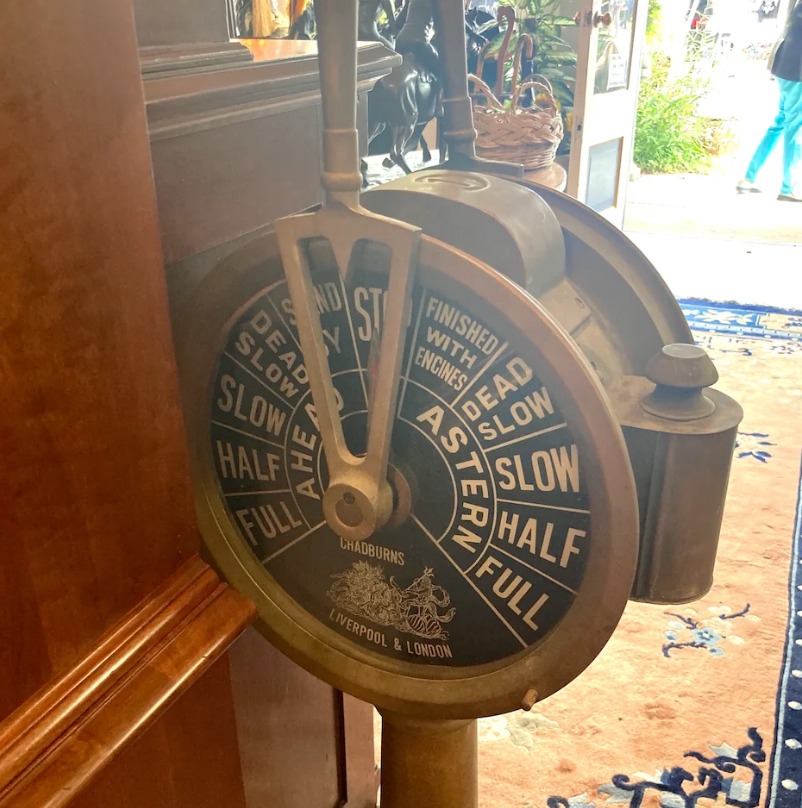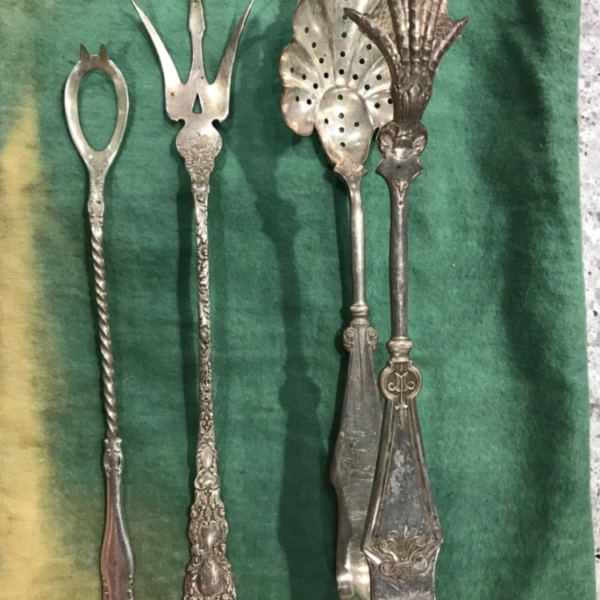In the intricate world of antiques, every item has a story, often hidden beneath layers of history and dust. Such was the case with a peculiar discovery at an antique shop, where a circular object mounted on a post puzzled visitors and online spectators alike.
This enigmatic find, shared on Reddit with the simple inquiry, “What is this thing?”, captivated the imagination of many, leading to a fascinating exploration of its origins and purpose.

The journey of discovery would eventually reveal that this mysterious apparatus is an Engine Order Telegraph (EOT), a crucial piece of maritime technology used in older marine vessels to facilitate communication between the ship’s bridge and the engine room.
The Engine Order Telegraph, with its iconic circular dial and handles, served as a vital communication link in an era predating modern electronic systems. It allowed the captain or the officer on the bridge to convey speed and direction orders to the engineers located in the engine room.
The device features a series of commands such as “Full Ahead,” “Half Ahead,” “Slow,” “Stop,” and “Full Reverse.” When the bridge officer moved the handle to issue an order, a corresponding bell would ring in the engine room, and the dial there would mirror the command indicated on the bridge’s telegraph. The engineer would then acknowledge the order by moving the engine room’s telegraph handle to the same position, ensuring that both the bridge and the engine room were in agreement.
The Engine Order Telegraph’s design is a marvel of nautical engineering, combining functionality with aesthetic elegance. Its brass and sometimes wooden finishes not only made it a durable instrument capable of withstanding the harsh marine environment but also a beautiful piece of craftsmanship.
The circular dial, often intricately labeled with the various commands, provided a clear and efficient method for issuing orders, crucial in the fast-paced and sometimes perilous environment of sea navigation.
The discovery of the Engine Order Telegraph in an antique shop and its subsequent identification highlights the fascination with nautical history and the technology that powered the great marine vessels of the past.
These devices are not merely relics; they are reminders of the human ingenuity and technological advancement that have long been associated with maritime exploration and commerce.
The EOT, in particular, symbolizes a time when communication relied on mechanical systems, requiring a harmonious collaboration between the crew members aboard a vessel.
Moreover, the process of identifying the Engine Order Telegraph underscores the value of community knowledge and the collective curiosity that drives the exploration of historical artifacts.
The online community’s engagement with the mystery of the circular object on a post exemplifies how digital platforms have become arenas for shared learning and historical discovery.
Through such interactions, obscure items are given context and meaning, enriching our understanding of the past and the technologies that have shaped human progress.
In conclusion, the mysterious circular thing on a post, discovered in an antique place and later identified as an Engine Order Telegraph, offers a captivating glimpse into maritime history and the evolution of shipboard communication.
This artifact serves as a testament to the technological ingenuity of the past and the enduring human fascination with the sea and its vessels. As we continue to unearth and decipher the purpose of historical objects, we not only pay homage to the achievements of earlier generations but also foster a deeper appreciation for the complex interplay between technology, history, and human endeavor.

